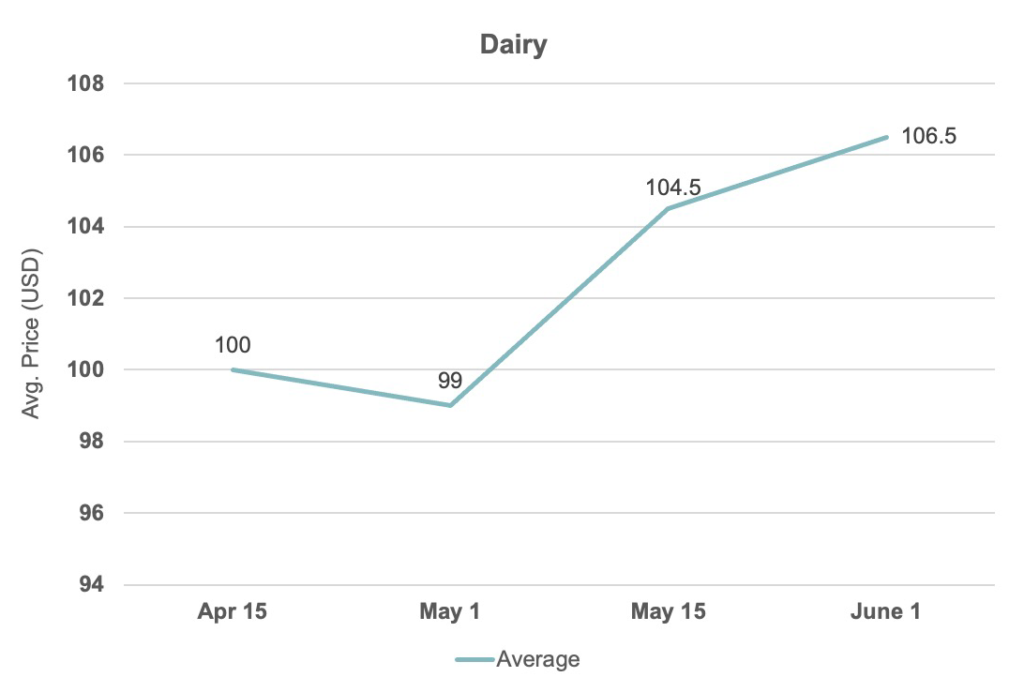The ongoing Russia-Ukraine war, provide chain issues, surging demand, climbing generation expenses, and the disruption brought on by COVID-19 have all contributed to the inflation that has strike the US sector with total pressure. The retail sector is viewing a steady drop in consumer expending as prices across classes are increasing considering the fact that March this calendar year. Inflation achieved practically 8.5% in March 2022 in the US, the best it has been in 40 years. Investors’ reduction of self-assurance in the US retail market place was apparent as some of the premier suppliers professional the most significant declines in their inventory price ranges due to the fact the 1987 market place crash. Insert to this the impending recession and it paints a bleak photo for the retail sector.
But shops are not all set to give up with out a combat. They have navigated the unparalleled crisis posed by the pandemic by arming on their own with engineering and digital applications much less than two yrs ago and are completely ready to do the similar to climate the inflation and get again on their feet.
Inflation Strikes in the Grocery Sector
While all retail sectors took a strike, shoppers very first noticed rate inflation in daily essentials like gasoline and grocery and the dent it was producing in their pockets. The enhance in grocery selling prices was rather slower in April than the 1.5% gain in March. Still, it marked the fourth straight month in which grocery charges elevated by at least 1%. Dairy costs spiked in April by 2.5%, although fruits and greens saw modest value declines.
Selling prices for cereals and bakery solutions rose by in excess of 1% very last thirty day period and are up by a lot more than 10% above the yr prior to owing to the confined grain and fertilizer exports from Ukraine and Russia impacting the global foods provide.
Intelligence Node tracked 20+ food items and grocery stores such as 2343 places for Walmart and 69 locations for Kroger as nicely as Amazon & Instacart ‘online only’ corporations, in the previous quarter, covering over 60% of the US grocery marketplace. Here’s what we observed:
As observed beneath, Intelligence Node’s facts shows a similar inflationary trend as recognized in the last couple months, corroborating the currently recognised incline in the prices in the last couple of months.

In the over graph, we can see that from April 15th to June 1st of this calendar year, that grocery prices have been on the rise and have steadily enhanced. This price motion across grocery suppliers warrants the financial inflation that is currently plaguing the US.
Drilling down even further in the grocery sector, Intelligence Node’s information observed a steady incline in the prices of dairy items as very well throughout retail giants Amazon. Kroger, Walmart and other individuals with price ranges of dairy spiking in May possibly and June as compared to April, indicating the mounting inflation in the US.

If this upward selling price development carries on, shoppers are shortly heading to tighten their expending and be far more economic with their browsing habits. Procuring on discretionary objects like apparel and house decor is previously getting a hit as inflation is making shoppers funnel much more income into requirements like groceries and fuel. Brands and shops must use the ongoing inflation as a springboard to consider, reimagine, and long term-proof their corporations with the aid of optimized processes, and a target on consumer buying choices. While some may perhaps argue that know-how is an financial commitment and will add to the previously substantial operations expenses in the course of inflation, in excess of time the deflationary nature of technology will be certain that the more merchants make investments in technologies the lower the costs about time. Keeping this in thoughts, now’s the greatest time for suppliers to invest in state-of-the-art retail engineering.
Down below, we go over 7 techniques for manufacturers and shops to counter the consequences of inflation on their enterprises and stay afloat even as the retail sector faces disruption, reduce need, diminished base strains, amplified expenditures, and instability.
1. Improve supply chain visibility and success approaches
Vendors can improve their offer chain and distribution costs by rerouting shipments by means of decrease-charge ocean lanes and ports, constructing strategically found fulfillment centers that decrease last-mile fees and harmony labor costs. Shops can also take a look at 3rd-bash delivery logistics companions to cut down overheads and money expenditure, make improvements to processes by making use of their expertise and technological know-how and come across methods to streamline and bolster the delivery community. By using automatic source chain solutions, vendors can have conclude-to-finish visibility into on line and offline inventory, make use of surplus in-keep inventory to fulfill online orders, enrich omni channel existence, and strengthen the client encounter.
2. Revisit assortment mix and class tactics
Economic downturn and inflated rates are by now influencing shoppers’ paying power and purchasing choices. Stores will need to take these components into consideration when they revisit their assortment strategy and create classes and product mixes that promote. As customers get much more value-sensitive, their loyalty to a brand name cuts down proportionately. This behavior attracts them to less highly-priced personal label items and charge-productive item bundling. Vendors must just take this option to check and encourage personal label products even though also obtaining a healthy combine of higher-need branded merchandise to be certain enough profits. Bundling the appropriate products at desirable costs can be one more technique that potential customers to more gross sales for every shopper without the need of consuming into item margins.
3. Leverage predictive analytics for correct sourcing
During inflation, it becomes a lot more critical than ever to stock the appropriate portions of the right goods. Excess stock will direct to income and warehousing area locked in lifeless investments and understocked inventory will drop you business enterprise in an currently restricted financial state. To make sure the ideal sourcing of products at the appropriate time merchants need to have insight into consumer traits, shopper preferences, and historic information. This is a activity of figures and has to be backed up by precise analytics to guarantee exceptional sourcing. According to the Wall Street Journal, joggers are piled up at Hole, Macy’s has overstocked on activewear, and Kohl’s is comprehensive of fleece. These stores did not anticipate customers shifting their investing from relaxed clothes and residence advancement items which were well-liked 6 months in the past and are now caught with surplus inventory. These examples reiterate the great importance of utilizing predictive analytics to supply the right solutions at the appropriate time in the right portions.
4. Channelize pricing alternatives to make improvements to margins
Inflation combined with the economic downturn has a direct effect on consumer paying ability. Buyers test to conserve more for the wet day and have to shell out additional revenue for necessities as selling prices soar and make a a dent in shoppers’ pockets. This instability helps make consumers extra cost-sensitive, with a quest to discover the finest discounts across platforms. As suppliers struggle it out to give the most aggressive charges to shoppers, a one mistaken pricing shift can have massive repercussions and have an effect on margins and conversions. With stakes so superior, pricing conclusions have to have to be backed by precise information and analytics. Retailers can’t rely on intestine sensation or historical information by yourself but require data that provides velocity, precision, and insights from a number of 1st and 3rd-bash resources, examining the 3 Vs of eCommerce facts (quantity, velocity, and range). Retail companies need to have a smart, automatic pricing resolution that will observe, review, and improve selling prices in line with competitors to get a sector gain. Intelligence Node’s AI pricing solution checks all these bins and can be executed in days and scale up or down as needed, acting as a best ally to overcome inflation.
Read through Additional : 9 Factors Why You Have to have an AI Pricing Resource Now!
5. Invest in the correct promoting channels
The initial intuition of a company operator or a marketer is to cut promoting expenses as inflation hits. That is where they go erroneous. As inflation hits and customer investing and solution costs maximize, internet marketing is just one spot that nevertheless needs to be performing at its entire potential with each individual penny to spare. Advertising can make need the place there isn’t any and pull purchasers to your shop. Instead of lessening advertising spending or scrapping marketing and advertising campaigns, shops need to revisit their marketing system and uncover techniques to enhance processes, reshuffle budgets to prioritize internet marketing channels with most ROI and determine advertising locations that can make much more income for the business.
6. Check out new electronic avenues for selling your items
To fight inflation and gear up for a channel-agnostic procuring working experience, stores have to have to be present on the internet, offline, and throughout channels. Whilst numerous retail enterprises ramped up their eCommerce functions amidst COVID-19 and streamlined omnichannel functions by supplying curbside pickup, BOPIS, and touchless supply, the upcoming of retail is considerably far more technologically sophisticated, developed, and diverse. Think the metaverse, the latest digital playground for manufacturers and stores to dip their toes in. Numerous large makes like Nike, Gucci, Balenciaga, and For good 21 have previously rushed to spend in the metaverse and market their goods just about through integrations, game titles, and suppliers. Website3 and the metaverse are by now on the way to disrupt retail as we know it and companies could use the backdrop of inflation to exam these platforms and introduce new methods to promote their products and solutions.
7. Have interaction and convert buyers by loyalty applications
A strong loyalty system can go a long way in retaining latest customers and attracting new types, in particular in the course of a recession when cost gains exceed all other procuring tastes. By supplying reward factors, early access to profits, added special discounts on a particular sum of spending, preferential shipping, free supply, and other enticing delivers, shops, and brands can ensure constant income throughout offline and on-line channels. Speaking delivers to shoppers proactively and becoming transparent with them will establish brand name loyalty and perform as a solid pillar in the course of inflationary durations.
Remaining Term: Harnessing Technological know-how to Beat Inflation
The past two many years have witnessed massive disruption in retail as the pandemic transformed the way people shopped and coaxed shops to adopt new systems and change concentration to digital. Shops that pivoted promptly survived, a lot of even thrived in spite of issues in the offer chain, shut economies, and diminished investing energy. Right now, as soon as once more suppliers are at the crossroads of yet another disruption, this time brought on by swift inflation. Technology and innovation will after again occur to the support of retail corporations – from serving to them approach and streamline stock and sourcing, pricing and assortment, and omnichannel distribution to personalization, customer provider, pattern forecasting, and a good deal more. The faster brand names and retailers embrace this strategy and spend in the ideal technological know-how, the more possibilities of them emerging from the inflation unscathed.


